The Blue-eyed Darner Rhionaeschna multicolor showed up in late July. Several buzz the pond continuously on a warm day.
An excellent resource for identification of dragonflies on British Columbia is http://www.pbase.com/terrythormin/bc_anisoptera
The Blue-eyed Darner Rhionaeschna multicolor showed up in late July. Several buzz the pond continuously on a warm day.
An excellent resource for identification of dragonflies on British Columbia is http://www.pbase.com/terrythormin/bc_anisoptera
A neighbour told me that Astilbe were good pond plants, so I have tried several. I think they need to be kept on the margins and well fertilized.
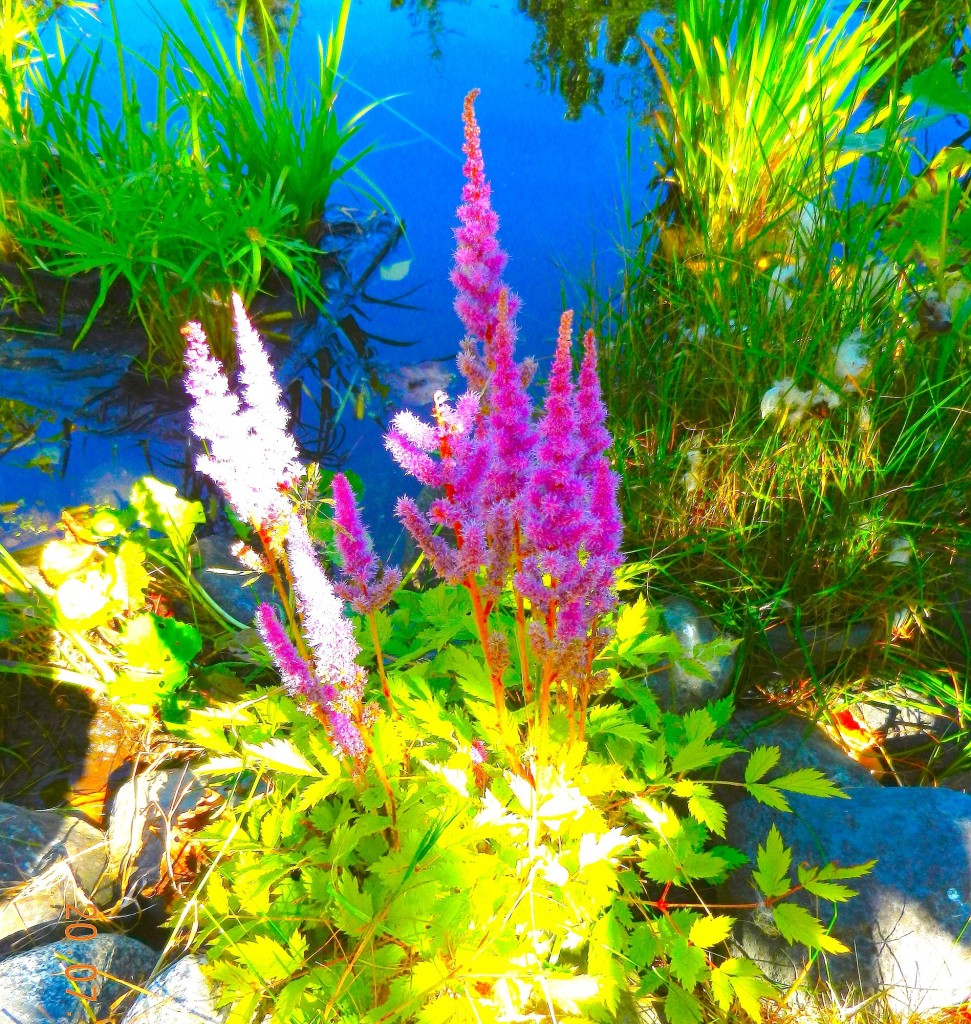
Scientific classification
Kingdom: Plantae
(unranked): Angiosperms
(unranked): Eudicots
Order: Saxifragales
Family: Saxifragaceae
Genus: Astilbe spp.
Actually called Giant Dwarf papyrus, this plant is hardy only in zones 9-11 so I move it into the greenhouse in the winter.
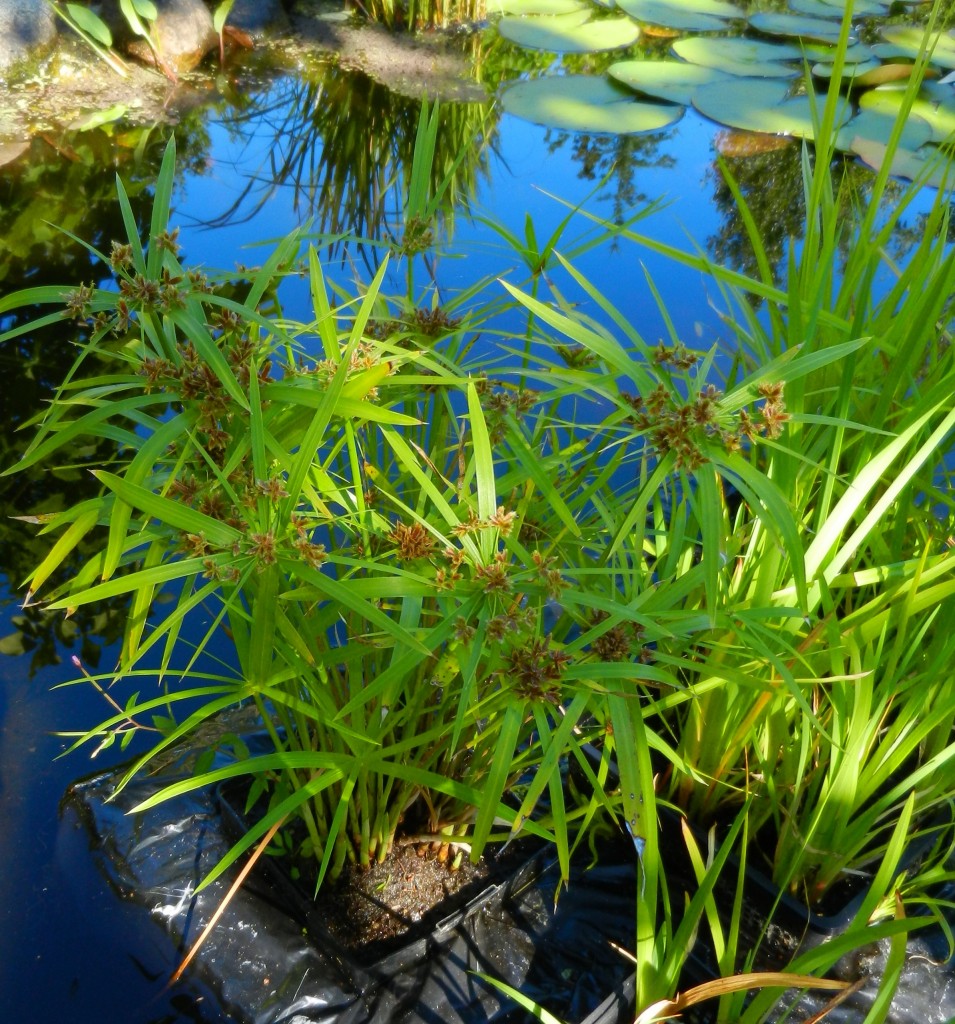
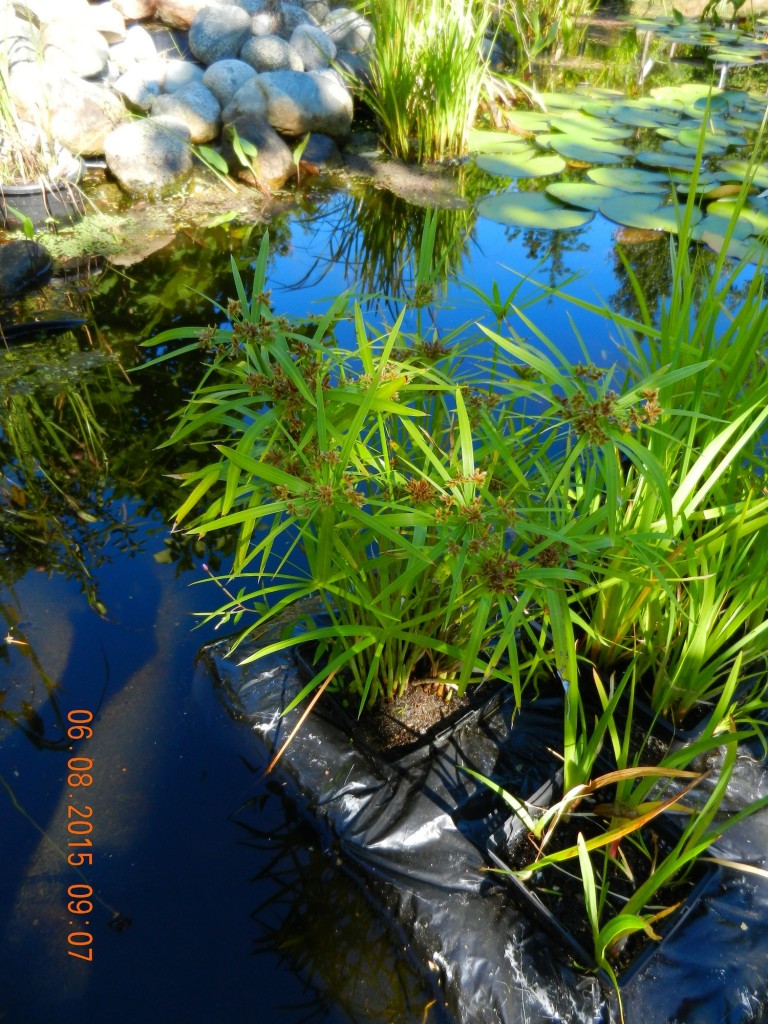
Kingdom : Plantae
Division : Magnoliophyta
Class : Liliopsida
Subclass: Commelinidae
Order : Poales
Family : Cyperaceae
Subfamily: Cyperoideae
Tribe : Cypereae
Genus : Cyperus
Species: percamenthus
In August the bloom of Azolla has started to increase. I added Azolla to the pond several years ago and have in the past had to skim it off as it covers the complete surface in late summer. It does provide good compost material with high Carbon and Nitrogen content. It normally cannot live in Northern climates but somehow has survived well here in the pond.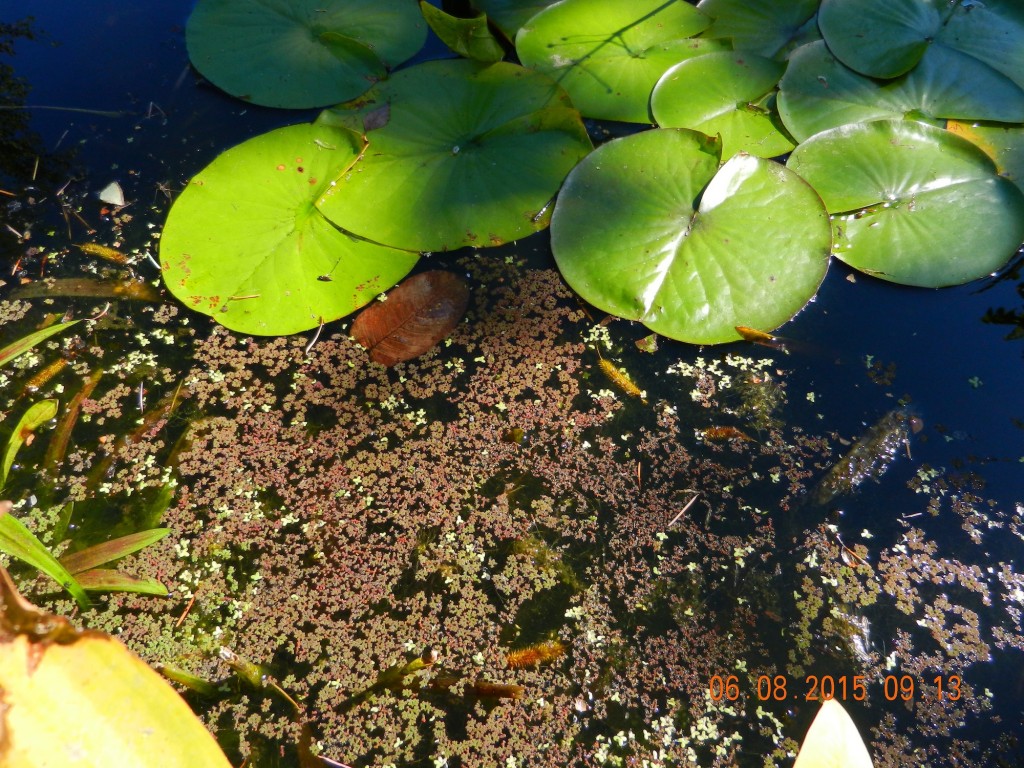
There is a theory called the “Azolla event ” where it is believed that Azolla in the tropical Arctic 39 million years ago fixed so much Carbon that it reversed global warming. Reference .
A good reference can be found at the Azolla Foundation
“Azolla is a unique plant that can help reduce man-made climate change and provide biofertilizer, livestock feed, food and renewable energy anywhere in the world.
The Azolla Foundation was set up by Azolla Biosystems Ltd founders Alexandra and Jonathan Bujak to provide a platform for sharing information about Azolla and its contribution to new technologies such as space exploration and planetary colonization.”
Also, the Nitrogen Fixation is the result of a sysmbiotic relationship between azolla and a cyanobacteria. This reference shows the formula for the process:
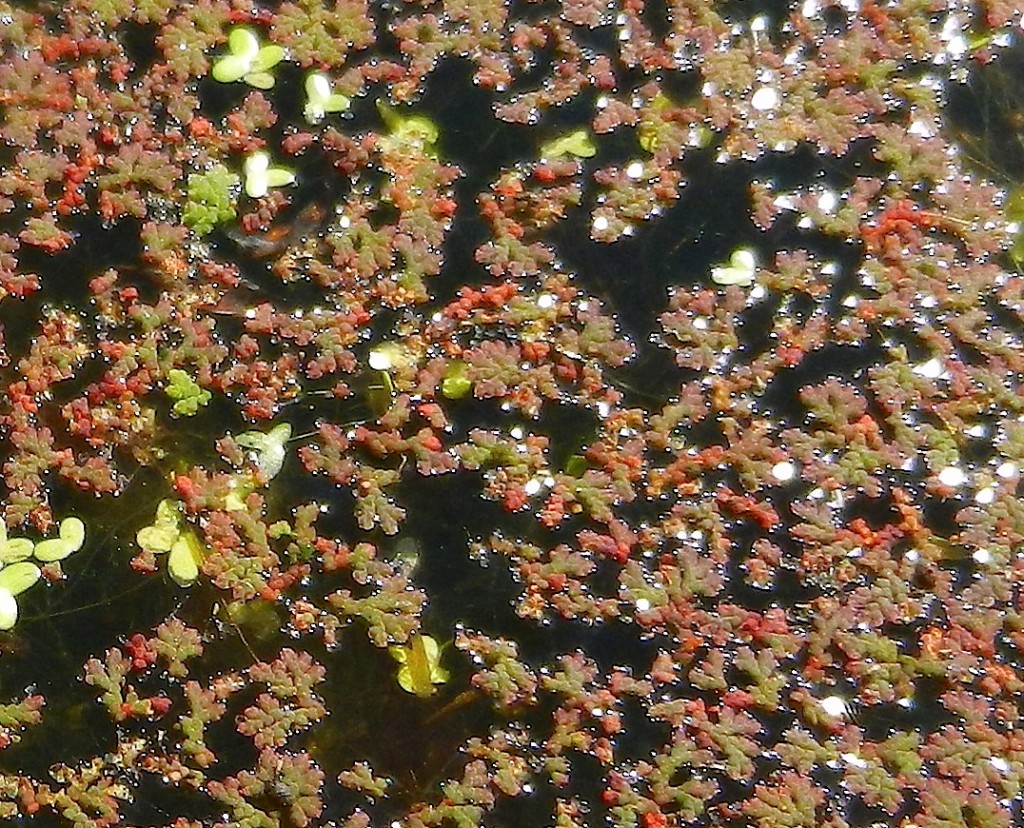
Kingdom: Plantae
Division: Pteridophyta
Class: Polypodiopsida
Pteridopsida (disputed)
Order: Salviniales
Family: Salviniaceae
Genus: Azolla
Type species
A. filiculoides
I have only seen this one female specimen in the pond, and it was clinging to a pondweed leaf, almost submerged in the water, and didn’t object to being placed on the lilypad.
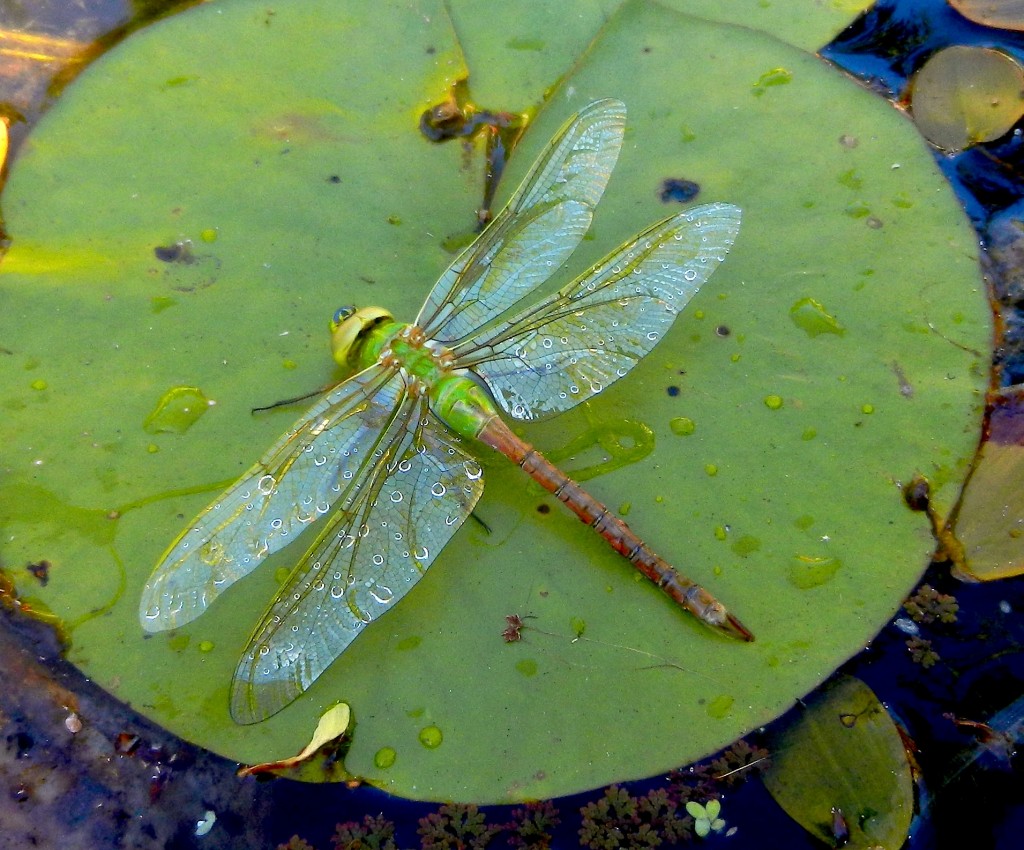
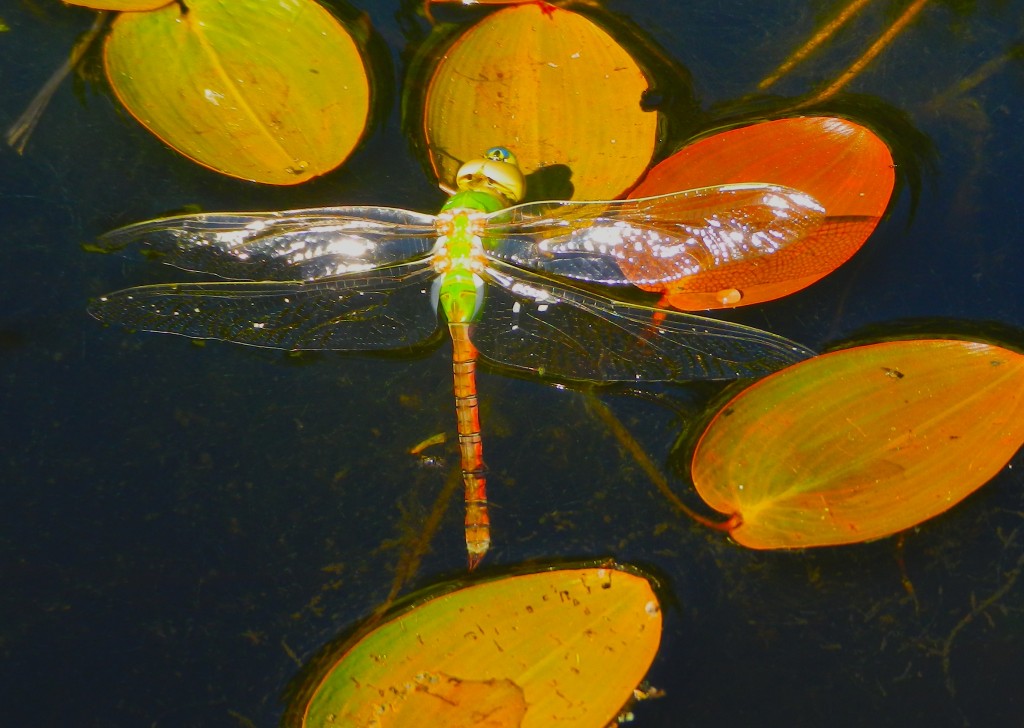
Scientific classification
Kingdom: Animalia
Phylum: Arthropoda
Class: Insecta
Order: Odonata
Suborder: Anisoptera
Family: Aeshnidae
Genus: Anax
Species: A. junius
Binomial name
Anax junius
(Drury, 1773)
Last fall I got this small plant with floating leaves and small yellow flowers. It spreads asexually with stolons near the water surface. It also was winter hardy Zone 8-10 as it overwintered in the pond. This one was supplied to a plant store by a local company here in Victoria, Applied Aquatics.
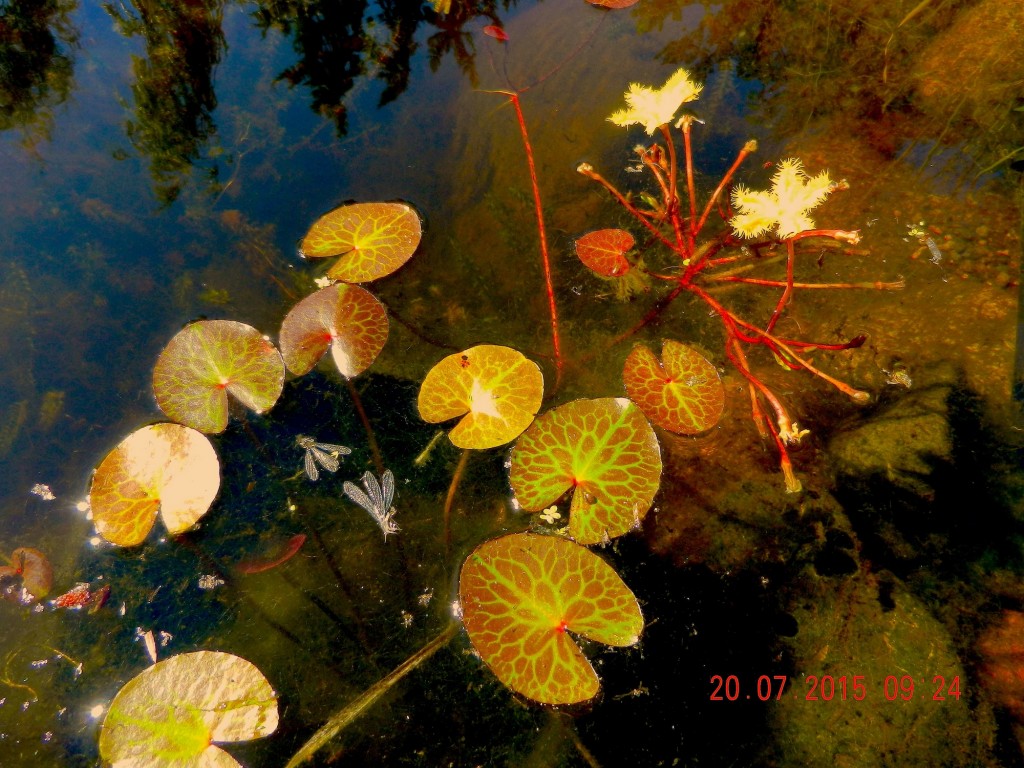
Scientific classification
Kingdom: Plantae
(unranked): Angiosperms
(unranked): Eudicots
(unranked): Asterids
Order: Asterales
Family: Menyanthaceae
Genus: Nymphoides
Species: geminata
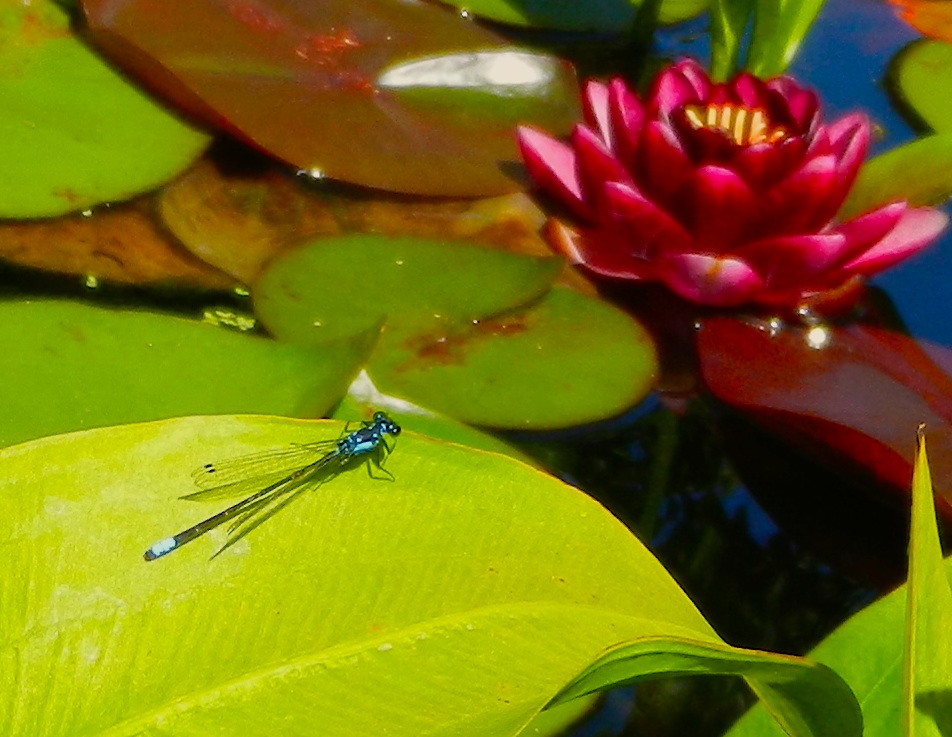
See also Dragonfly tag:
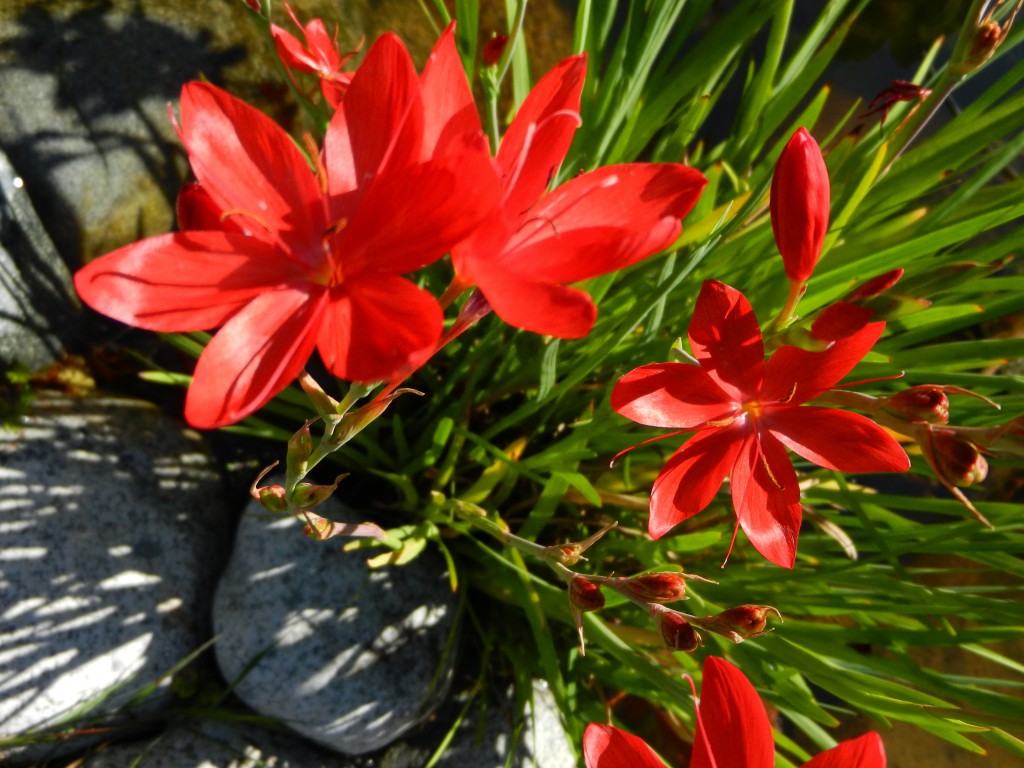
For several years now I have been growing a very successful and attractive lily in the pond which I originally bought from a local plant store as a reddish-orange kaffir Lily, Schizostylis coccinea.
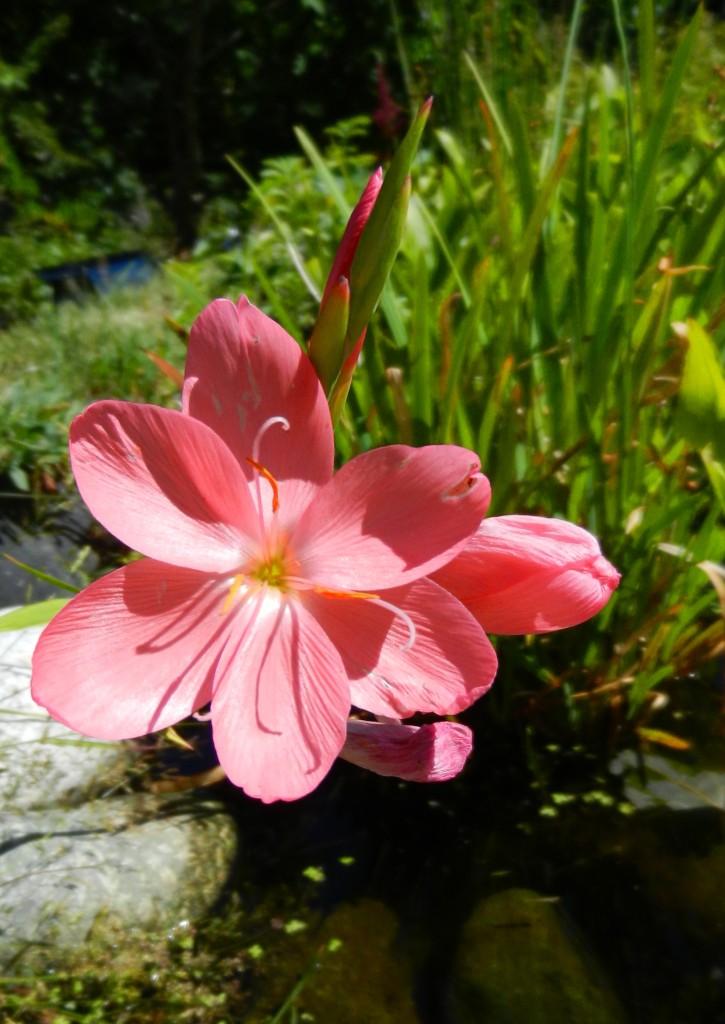
The interesting thing is that it reproduces from seeds very well –and last year a pale pink variety came from a seedling. I kept these plants in the same pot and overwintered in the greenhouse. Normally the red flowers appear in August, but when I set it back in the pond in March, after continuing to bloom most of the winter, it flowered again for a month. Then in early June the pink-flowered plant came into bloom and is still flowering in July. All the other “scarlet river lilies” (see political correctness comment below”) that were left in the pond over winter will bloom again in late summer.
A number of interesting points come up when researching this plant:
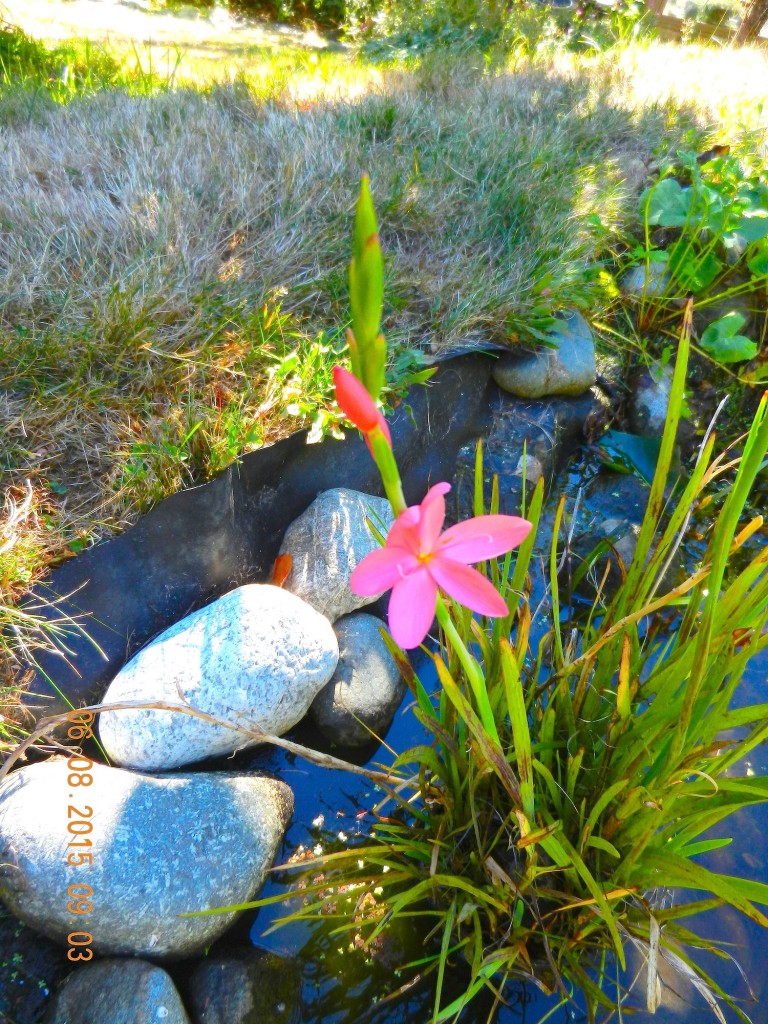
1. The “pink” variety I have does not correspond to either of the pink varieties mentioned in this reference . “Schizostylis coccinea ‘Mrs Hegarty’ was named by Sir Frederick Moore, the Director of Glasnevin Botanic Garden, after the lady who discovered a chance pink seedling in her garden in County Galway in 1914. She was persuaded to show her plant at the RHS show in London in 1919. It was immediately successful and was given an Award of Merit. Schizostylis coccinea ‘Mrs Hegarty’ has deep rose-pink flowers and yellow anthers and has been rather superceded by the cultivar ‘Sunrise’ which is also pink. Schizostylis coccinea ‘Viscountess Byng’ has pale pink petals and the anthers are purple brown. This cultivar is later flowering and is named after the dedicated rock gardener of the 1920’s. Her flower beds were sometimes temporarily covered in water.”
Reference: “St. Andrews Botanic Garden Flower of the Month”However the anthers of the pink variety I have are pink!
2. A Scientific name change: Schizostylis spp. came to be seen as distinct from Hesperantha spp. whereas in almost every detail, Schizostylis is identical to Hesperantha. Most Hesperantha species have pink flowers, while Schizostylis is bright red. Since forms of Schizostylis with pink flowers are found in cultivation and in the wild, however, that doesn’t seem to count for much. The final proof is that Schizostylis and Hesperantha is the DNA data, which confirms that the two genera cannot be separated.
3. Political Correctness has influenced the common name . For years it was known as the Kaffir Lily. As the Ken Thompson points out in this 2012 Telegraph article:
“–Kaffir is an offensive term for black South Africans. I suspect no one outside South Africa is likely to consider “kaffir lily” a racial slur, but nevertheless I sense a campaign is afoot to find something less offensive. Crimson flag lily, Cape lily and river lily, or scarlet river lily, all appear to be in circulation. ”
Reference Botanical Identity crisis solved
The Drakensberg mountains in South Africa are where most of these lilies come from.
Kingdom: Plantae
(unranked): Angiosperms
(unranked): Monocots
Order: Asparagales
Family: Iridaceae
Genus: Hesperantha
Species: H. coccinea
Binomial name Hesperantha coccinea (Backh. & Harv.) Goldblatt & J.C.Manning
I can’t recall seeing so many Tiger swallowtails around the yard in other years as we are seeing this year.
Our non-invasive but introduced butterfly bush Bidulphia sp. is particularly attractive to them.
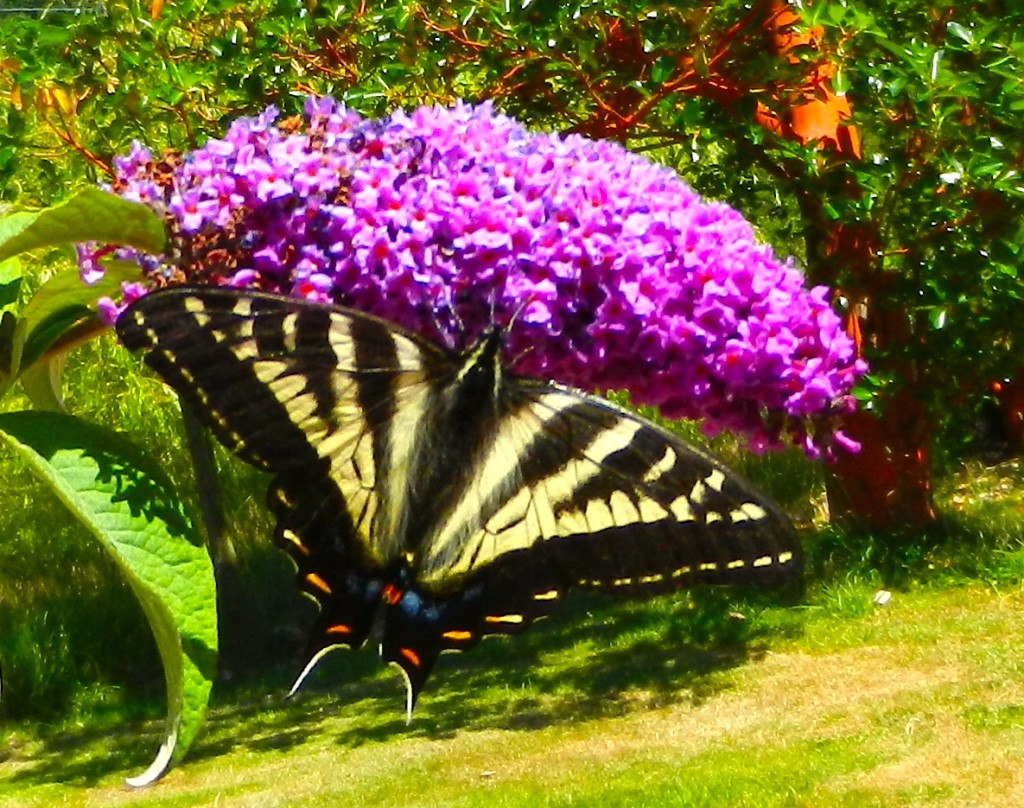
[bulletlist]
[/bulletlist]
Scientific classification
Kingdom: Animalia
Phylum: Arthropoda
Class: Insecta
Order: Lepidoptera
Family: Papilionidae
Genus: Papilio
Species: P. rutulus
Papilio rutulus Lucas, 1852